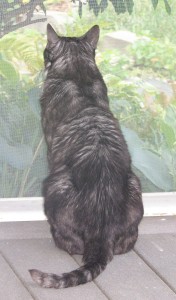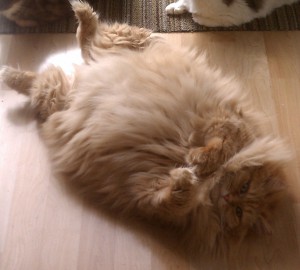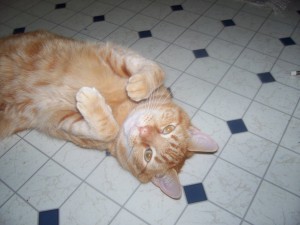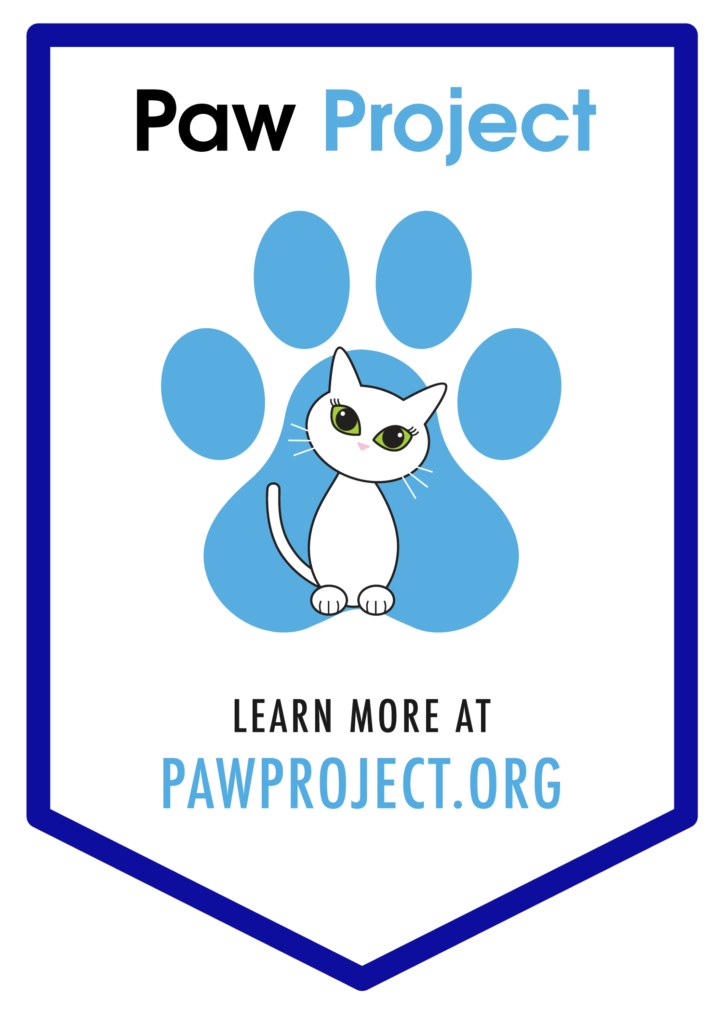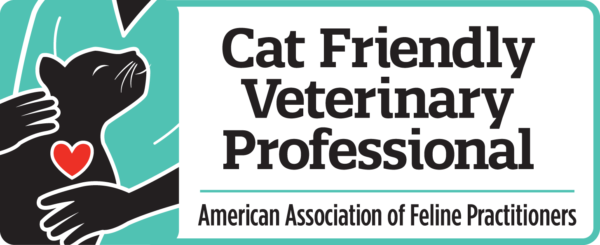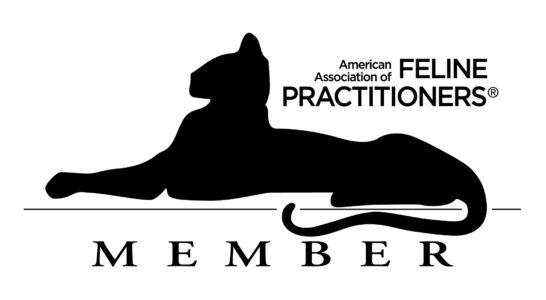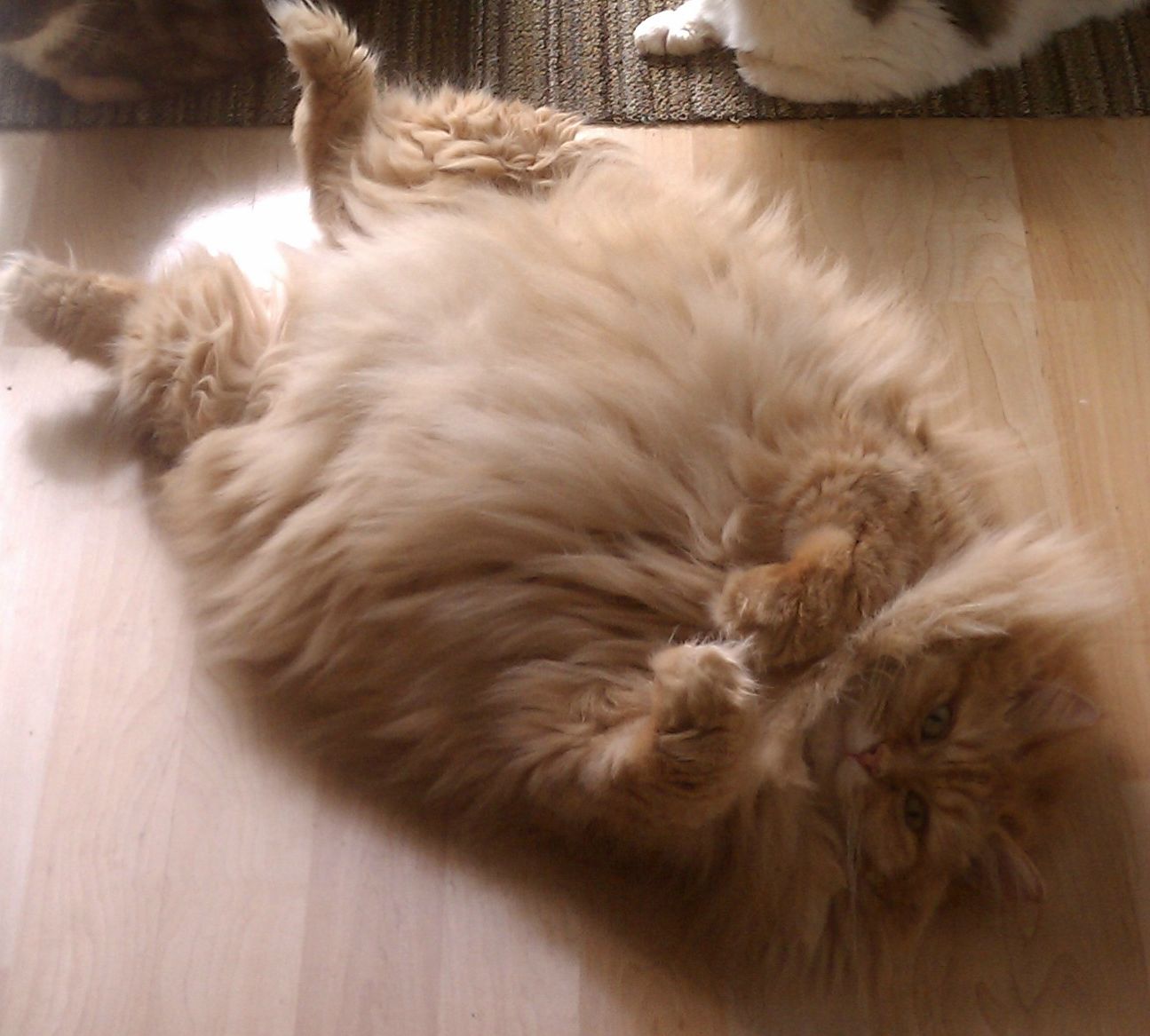
Clients often express to me that they think their cat does not like them, is ignoring them or is a snob. This prompts further questioning, “Why do you think your cat doesn’t like you, I ask?” The most common reply is, “he sits with his back to me; he shuns me.” They are always surprised by my answer. “Your cat trusts you,” is my reply. Cats are constantly self- preserving, which means most of the time they really want to be sure that they are safe and “have their back”. A cat that is confident enough to sit in the middle of your living room with their back toward you feels comfortable in the home and is showing you that it is trusting of your presence. The exact opposite of how most humans interpret this behavior.
Sleeping is also a vulnerable position for the cat. This is an obvious time when they could fall victim to an attack by another predator or a rival cat. Remember that even your pampered indoor house cat, is still a cat! The cat is a species that is both predator and prey. Instincts override all of the comforts we provide and all of the amenities they enjoy. So the next time your little love bug decides that curling up on your lap is the best place to sleep or snuggles into bed with you at night, that’s a compliment folks!
Which brings us to another perplexing and often misunderstood feline behavior, the belly, to rub or not to rub, that is the question isn’t it? So many clients carry over our knowledge from the dog, a species we as humans have lived with much longer than we have lived with cats. We know more about the dog as a whole, their social order, their body language etc. After all, we domesticated them intentionally to meet our needs. So often I hear, “my cat is belly up and showing me submission.” Submission, however, is not a common component in a cat’s behavioral repertoire. They will typically retreat, otherwise known as “flight” or stand their ground and engage otherwise known as “fight”.
Below is a belly that would clearly enjoy some scratches!
So do you touch the belly or not?? The answer to this can be variable. Other body language needs to be observed to help make this decision as does the surrounding circumstances. It could be an indicator that your cat is feeling relaxed and in a loving mood. Perhaps your cat enjoys belly rubs and you are ready know how and when to interpret their wishes based on previous experience. If their ears are pointed forward and erect and their pupils are not dilated, the tail is calm and not flicking, then the coast is likely to be clear. It is also important to note that some cats, when feeling safe and secure, will sleep this way, again, showing trust and comfort, but are not interested in having this very vulnerable place touched.
The most common and instinctual reason for belly exposure is when two cats are engaging in play or about to have an altercation. The cat that flops onto its side exposing its belly is NOT being submissive; it is exposing all of its weapons. The cat that is in standing position best watch out because it is about to get greeted with teeth and four paws full of claws! If the ears are flat back against the head, the tail is flicking from side to side and your cat seems wound up and agitated, it probably is, and sticking your hand in the mix is not recommended. Respect this; this is not a funny way to play with your cat. Instead, stuff a kick pillow or other large toy in their belly and let them attack that!
In fact, this is one of the most common problems of learned aggression. Cats that are allowed to play with hands and feet inappropriately continue to do so throughout life and it can be a very challenging problem to resolve. Many are euthanized every year simply because someone taught them to “play” this way. It is not cute or funny. This type of play typically starts when the cat is just a kitten. Acting ferocious seems cute and entertaining, but when that cat is a full grown 12 pound carnivore, that does not know the power of its own bite, it hurts, a lot! This is one of the most common reasons clients seek my behavioral help and it could all be avoided if we just played with our kittens with toys instead of our hands.
Since the cat has now surpassed the dog in popularity it is imperative that cat guardians learn more about these normal behaviors so that we can all “speak the same language” and communicate better. It will create understanding instead of misinterpretation that can lead to so many negative assumptions. Please take the time to understand your cat, and what they are trying to tell you. If you are unsure, please ask I am here to help!
Below is a photo of a receptive body posture for a belly rub.
